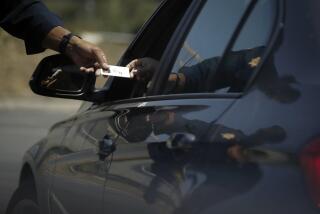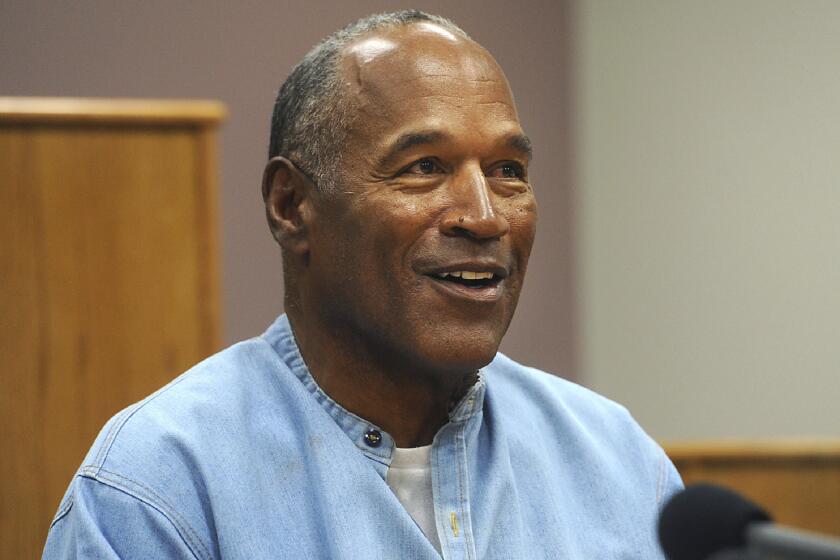Dangerous pursuits
IF YOU WORRY — as you should — about the dangers of high-speed police chases, don’t expect the U.S. Supreme Court to impose new limits on the practice. This week, several justices reacted skeptically to the claim of a Georgia man that he should be allowed to sue a deputy sheriff because he was paralyzed after a police car rammed his vehicle.
Fortunately, in Los Angeles and elsewhere, police forces are acting on their own to limit the dangers such chases pose to police, suspects and the public. Sensible regulations are a better safeguard against out-of-control chases than a Supreme Court ruling making it easier for suspects injured in such cases to sue police officers.
A good thing too, because the case argued Monday was a poor candidate for a sweeping decision against police. A lawyer for Victor Harris, who is now a quadriplegic, asked the court to extend to car chases its 1985 ruling that police pursuing someone on foot may not use deadly force unless the suspect poses “a significant threat of death or serious physical injury to the officer or others.”
Unluckily for Harris, the justices were able to view a videotape of the nine-mile chase that began when police tried to stop Harris for speeding. Justice Antonin Scalia called it “the scariest chase I ever saw since ‘The French Connection.’ ”
A majority of the court seems likely to embrace the position of the Bush administration. Deputy U.S. Solicitor General Gregory Garre told the court that when a suspect “demonstrates a disregard for his own life and the lives of others in his path, the police may use force, including deadly force, to bring the suspect’s vehicle flight to a halt and protect the public safety.”
The problem is that police chases are often prolonged not because the officers fear that a driver will injure others but because they don’t want to lose their man — even if the only crime he has committed is speeding, and even when pursuing him poses a danger to bystanders.
The best way to rein in overzealous officers is to do what the Los Angeles Police Department has done: establish a pursuit policy that places the safety of the public above the goal of apprehending a motorist who hasn’t committed a serious crime or who can be arrested later. The policy says that ramming a fleeing car is a “last resort” to be used only when necessary to save lives.
Technology also may help. The LAPD has experimented with an air-propelled miniature dart equipped with a global positioning device. Fired from a patrol car, it sticks to a fleeing vehicle and allows police to track it.
However the Supreme Court rules in the Georgia case, responsible police departments will continue to tell officers to take it slow — for their own and the public’s protection.
More to Read
Start your day right
Sign up for Essential California for news, features and recommendations from the L.A. Times and beyond in your inbox six days a week.
You may occasionally receive promotional content from the Los Angeles Times.






